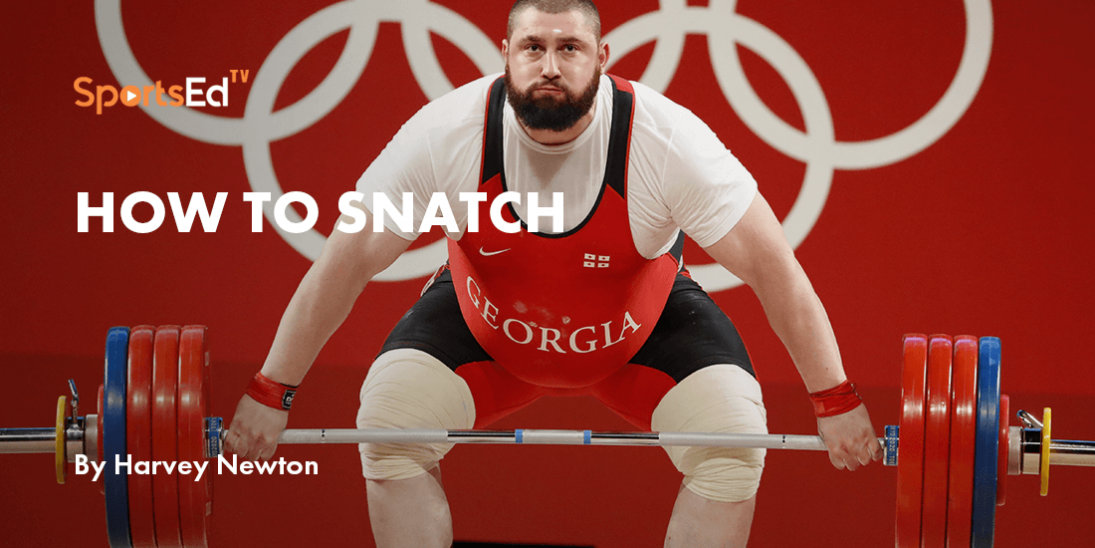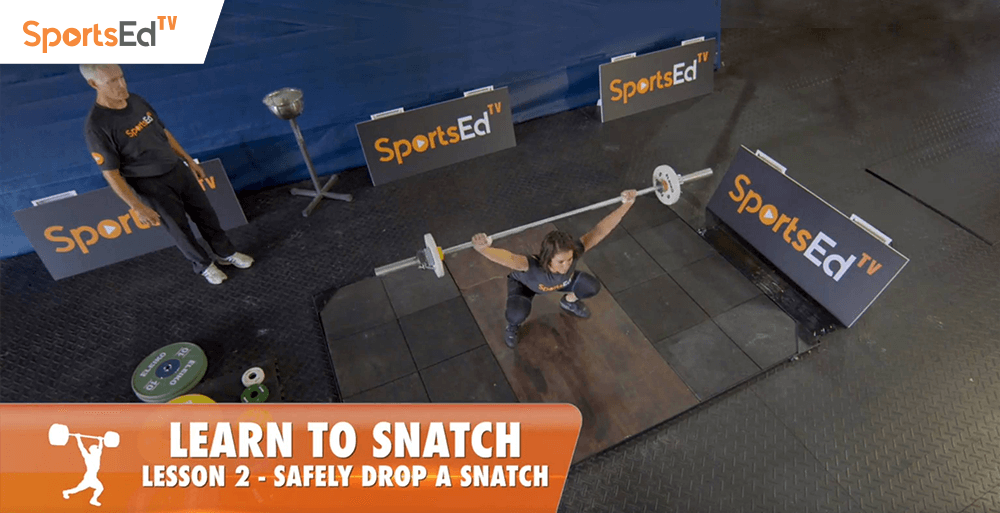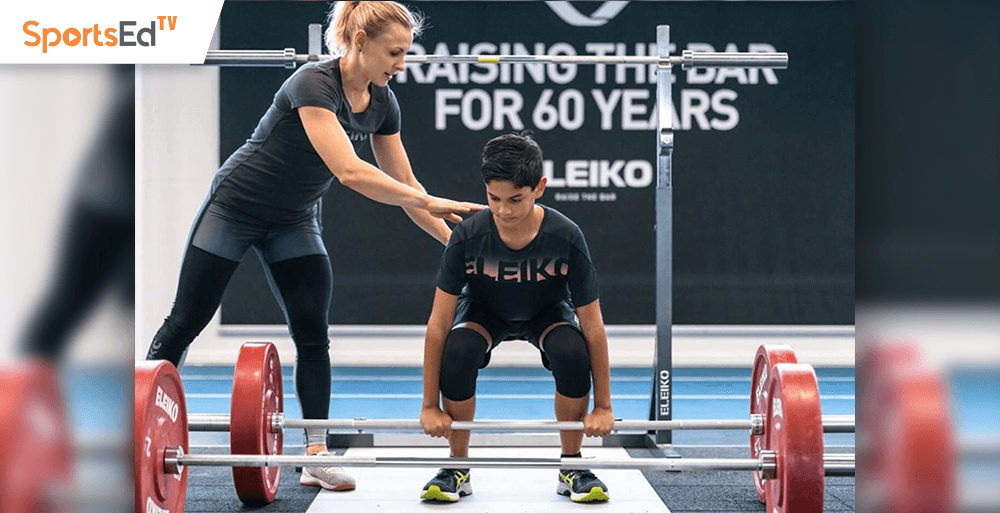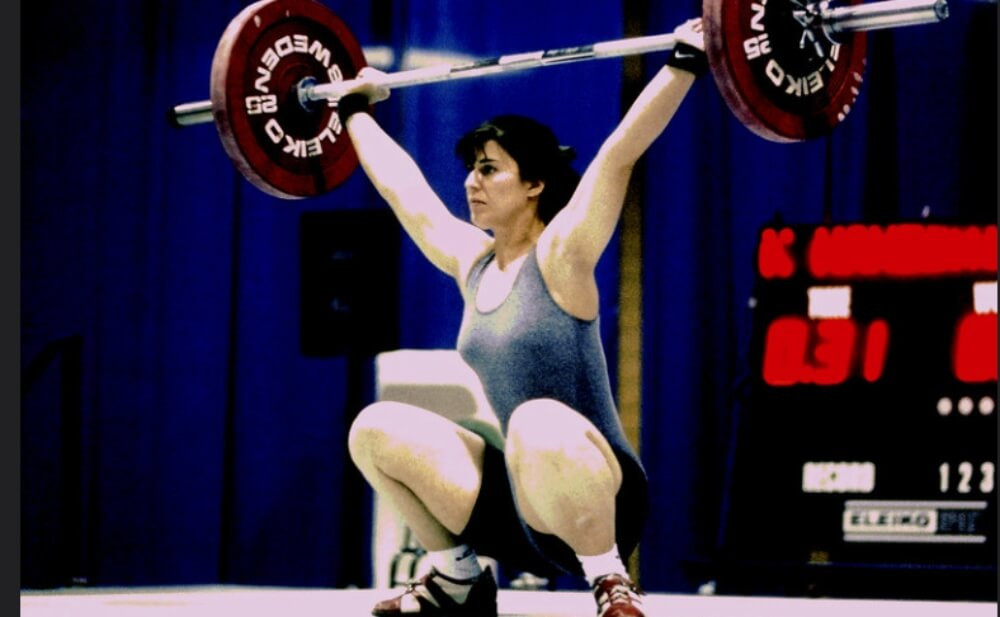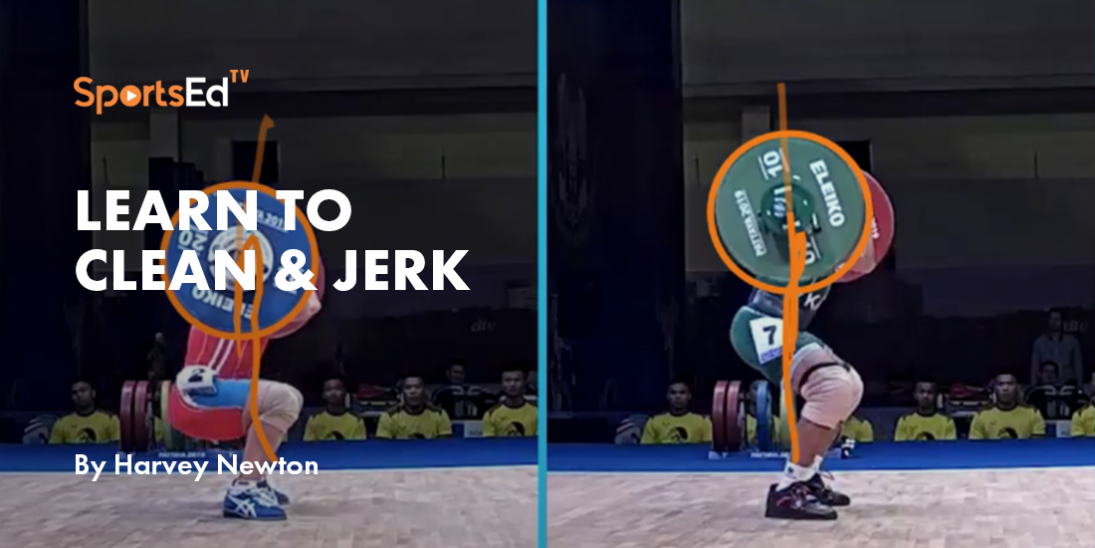Weightlifting
Welcome and thanks for visiting...

The ABCs of Weightlifting Equipment
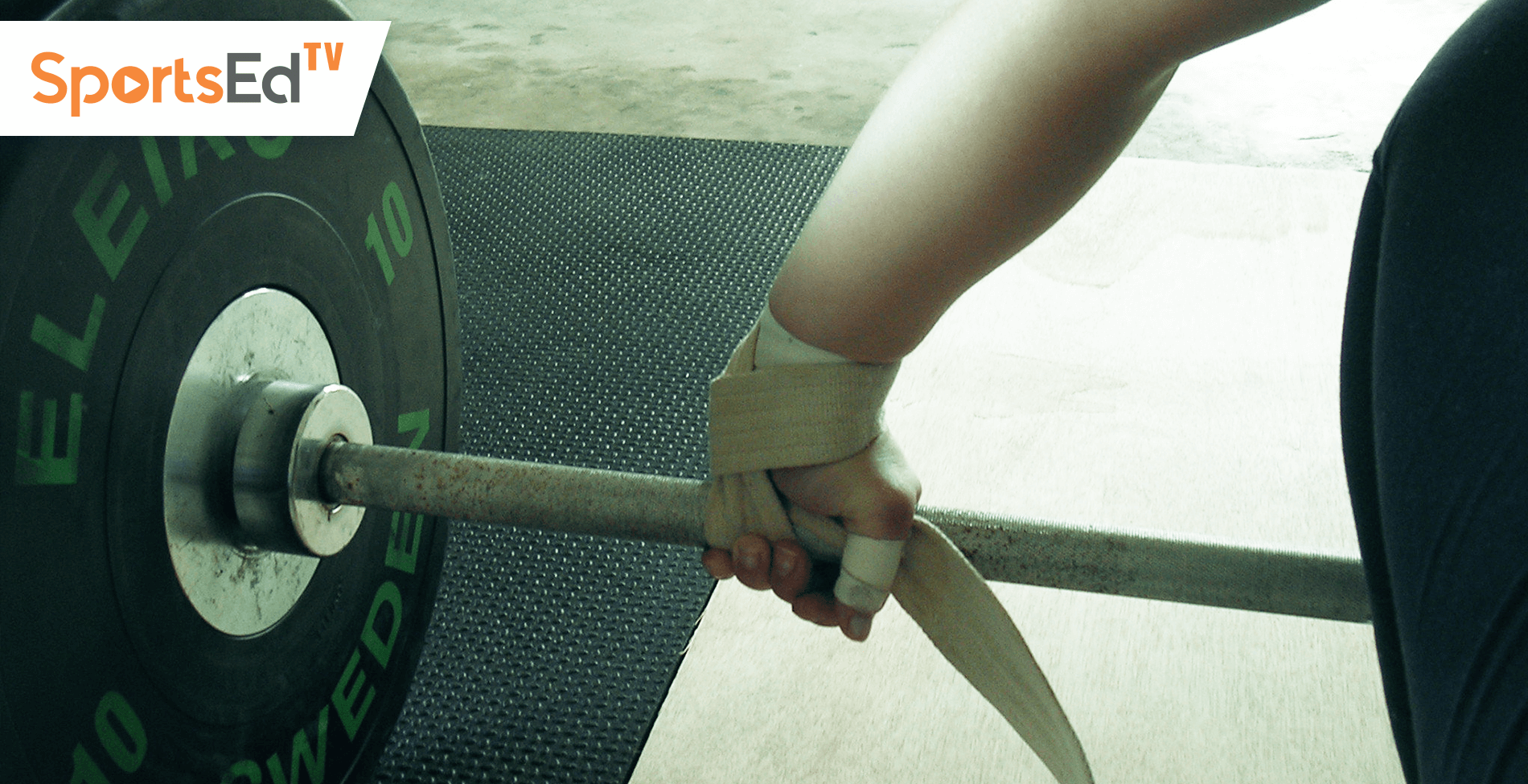
An online search for weightlifting equipment is a popular one. Details might relate to Olympic-style weightlifting or to the more generic activity, weight lifting. This latter pursuit is more appropriately termed weight training.
Regardless of possible confusion in the marketplace, let’s look at the sport of weightlifting, which is why you’re on the SportsEdTV site, right?
Basic Competition Equipment
For training purposes, the only essential piece of equipment needed is a barbell. It’s hard to believe today, but when I first met the late Mario Martinez (US Olympian 1984-1988-1992) at the 1976 Junior World Championships, he trained at home on what is known as a standard, regular, or exercise (non-revolving) bar and plates. Only periodically could Mario get to Jim Schmitz’s Sports Palace in San Francisco and train on competition equipment. That’s dedication!
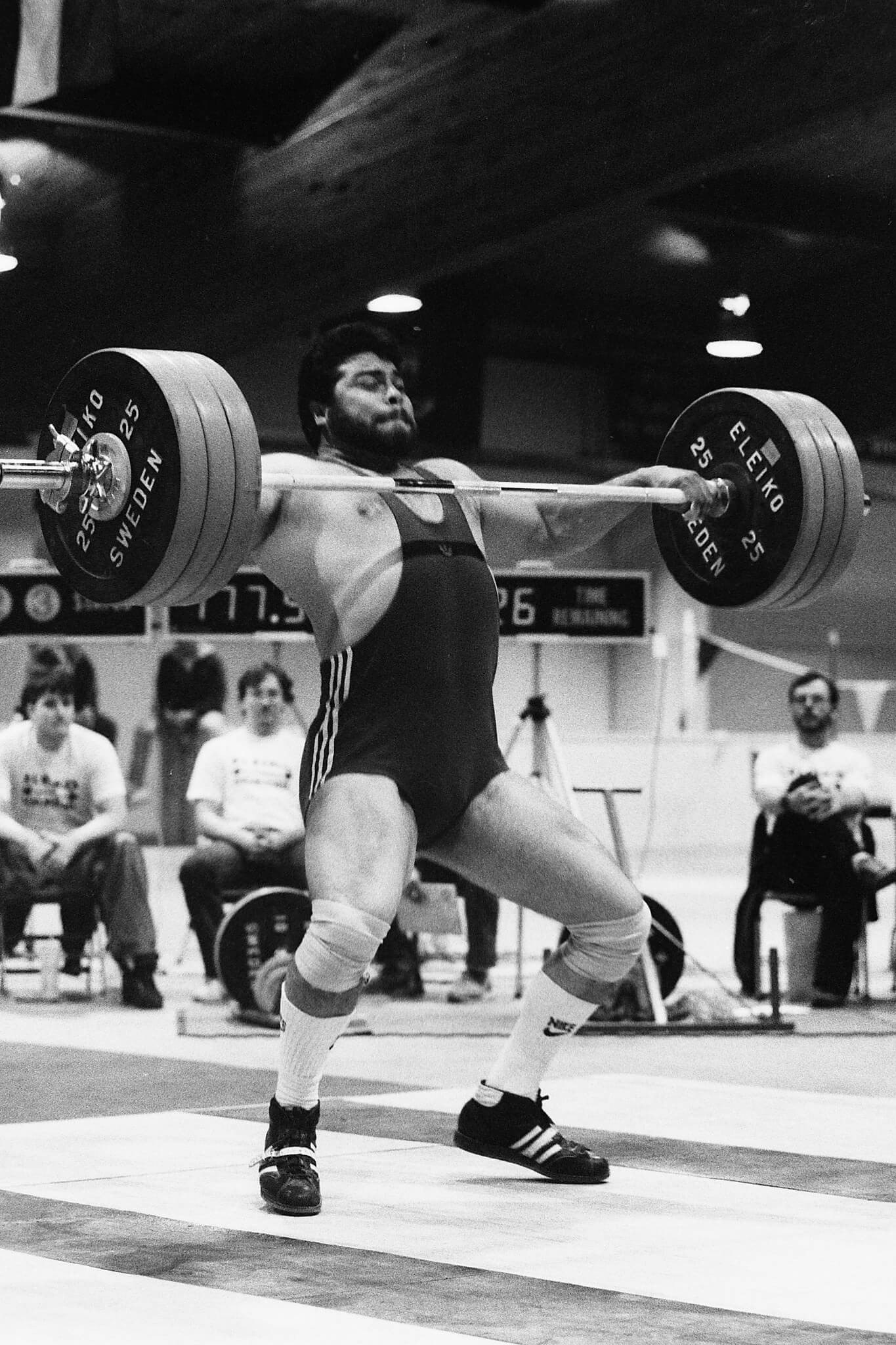
The ultimate goal of most lifters is to eventually compete, so let’s first take a look at what equipment relates to the competition environment. Later, we’ll consider more individual gear utilized for training purposes.
Barbell
The so-called "Olympic standard" barbell was introduced in 1928. The barbell unit consists of a bar, sleeves (where the discs go) on each end through which the bar revolves, and collars to secure the disks to the bar, and the actual discs or plates.
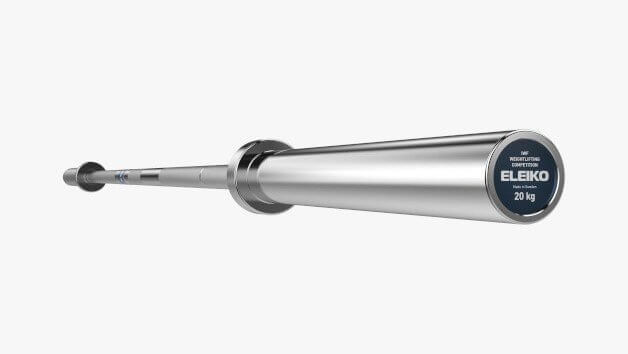
Standard competition discs come in the following sizes:
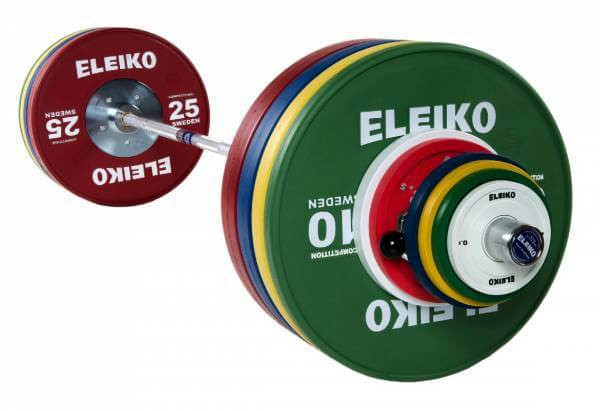
- 25kg (red)
- 20kg (blue)
- 15kg (yellow)
- 10kg (green)
- 5kg (white)
- 2.5kg (red)
- 2kg (blue)
- 1.5kg (yellow)
- 1.0kg (green)
- 0.5kg (white)
The largest disk diameter is 450mm (just under 18 inches). Full-sized disks are now normally available in weights down to 2.5kg, which allows light (technique) weights to be positioned at regulation height.
Barbell changes have taken place over time. For example, we now use rubber “bumper” plates, not the old iron discs common pre-1970 or so. With the introduction of women’s competition toward the end of the 20th Century, we now have two bars available: a men’s bar (28mm diameter) weighing 20kg, and a women’s bar (25mm diameter) that weighs 15kg.
Platform
For national and international competitions, the platform measures 4 meters square (a bit more than 13 feet on each side). It is customary in local US meets to lift on a 12ft square platform made of 4’ x 8’ pieces of plywood. Many meets today are held in CrossFit “boxes,” and it is not uncommon to simply lift on rubber mats measured or marked for the correct size.
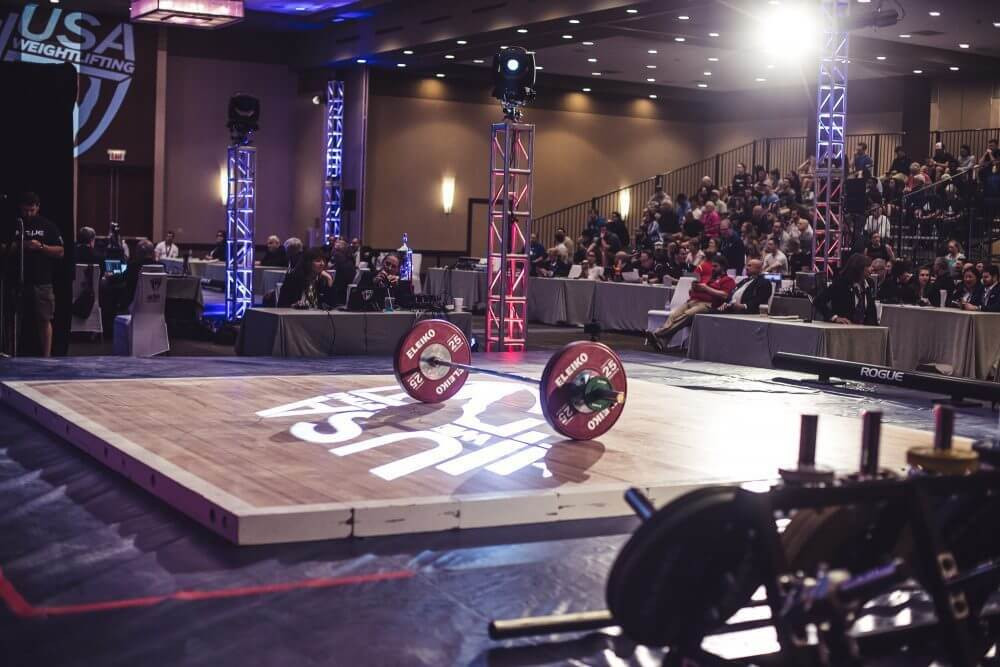
Smaller (8’ x 8’) platforms are available in the warm-up area, space somewhat removed from the competition site where preliminary efforts are made before stepping onto the competition platform.
Chalk
Chalk, or carbonate of magnesium, is applied to the hands and greatly aids the grip. Chalk comes in either block or powdered form and is available in most sporting goods stores or online.
It helps to have a container for the chalk. Excess chalk that accumulates on the floor is not well tolerated by many gym owners.
Should a newcomer stroll into a competition, that’s pretty much it, equipment-wise. Of course, the referees need some sort of system in order to render their decisions relative to your lifts, but this is nothing for which the athlete needs to be concerned.
However, there is one more item that is required if our novice lifter plans to compete this day.
Uniform
One should not be surprised that weightlifting, like most sports, has a required uniform. During competition, lifters must wear what is known as a “singlet”. Technical rules outline the specifics. Over time regulations have changed and we now see lifters permitted to wear a so-called unitard, thus covering their entire body more completely than a singlet.
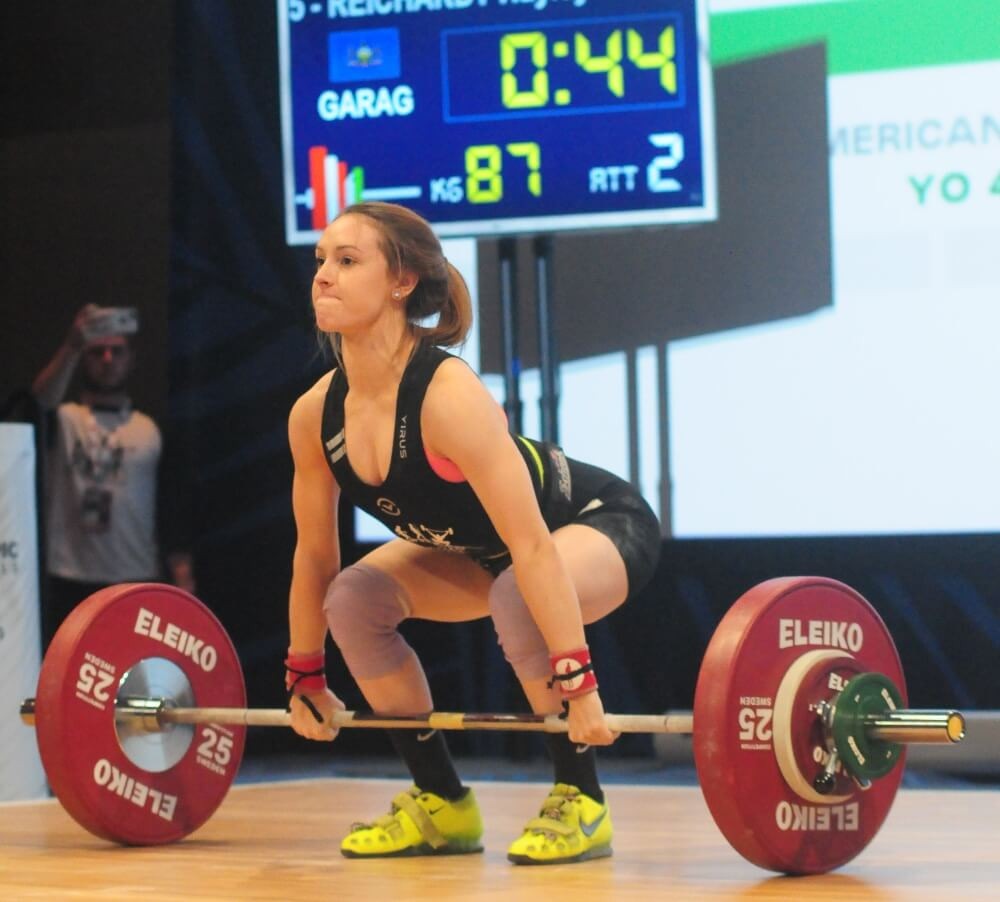
Training Equipment
Now, let’s look at other equipment or gear needed to train and learn weightlifting techniques.
Uniform
For training purposes, most lifters wear a lower body garment to cover the thighs and a t-shirt. The training hall environment may dictate more or less clothing as conditions allow. While serving as USAW’s national coach in the early 1980s, we hosted the Cuban national team for some joint training sessions. The Cubans trained in essentially a brief Speedo type of lower body garment, period. These training sessions sometimes produced a sizeable audience of non-lifters who just wanted to “watch the show.”
.jpg)
Weightlifting Belt
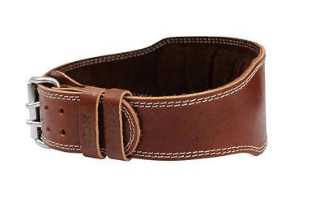
Note that this is not a “weight belt.” A weight belt is something a skin or SCUBA diver uses to achieve proper buoyancy while underwater. Although Wikipedia lumps weightlifters, motorcyclists, and factory workers into users of a “kidney belt,” I would hesitate to refer to ours as having much to do with the kidneys.
The concept of a weightlifting belt has been around for many years, although its popular use today contrasts with much less use in the past. Some early Continental lifters are shown with something similar to today’s belt, but a check of lifters in the 1930s – 1950s reflects many performing without a weightlifting belt. Oftentimes a small belt, not unlike a standard belt used in lieu of braces (suspenders) for men’s trousers was noted on lifters of an earlier era.
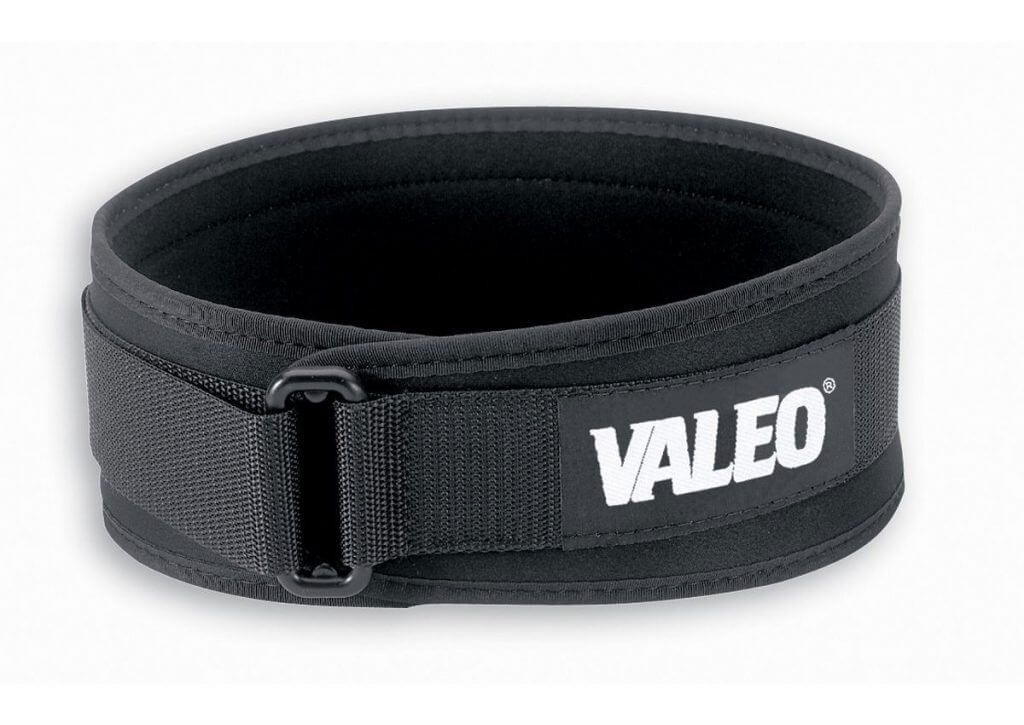
As the former competitive lift called the press evolved from a strict upper-body strength movement to the total body “Olympic” press of the 1960s, greater use of the weightlifting belt is noted. Leaning backward under load, which became common, was not necessarily good for one’s lumbar spine, but the belt gave some sense of protection. This medical concern of possible injury was one reason given for eliminating the press from the competition program.
There are certain standards applied to belts, which may be made of different materials. The original leather weightlifting belt was often not used during the snatch as lifters sometimes hit the belt’s buckle during the second pull. This resulted in a Bulgarian-designed belt with a buckle located off-center. Some modern belt designs include a Velcro® closure, eliminating the buckle altogether.
Repeated scientific research suggests that much of the possible benefit from using a weightlifting belt is psychological. Yes, it may protect the lower back muscles from cold, drafty conditions, but such conditions seldom occur during weightlifting competitions. In many instances, a lifter is well advised to strengthen his/her “internal” belt (the abdominal musculature) versus pushing outward against an external belt.
Wraps
Lifters are allowed, but not required, to use Ace®-type wrap bandages on the knees and wrists. Rules exist that limit the amount of skin that can be covered. Pull-on knee sleeves made of various materials may be used instead of a wrap. Leather wrist wraps are seen on some lifters.
These wraps provide some support and certainly help keep the joints warm. For a weightlifter, a wrap is not intended to restrict the range of motion of a particular joint, as might be seen with a powerlifter and the supportive devices that sport often encourages.
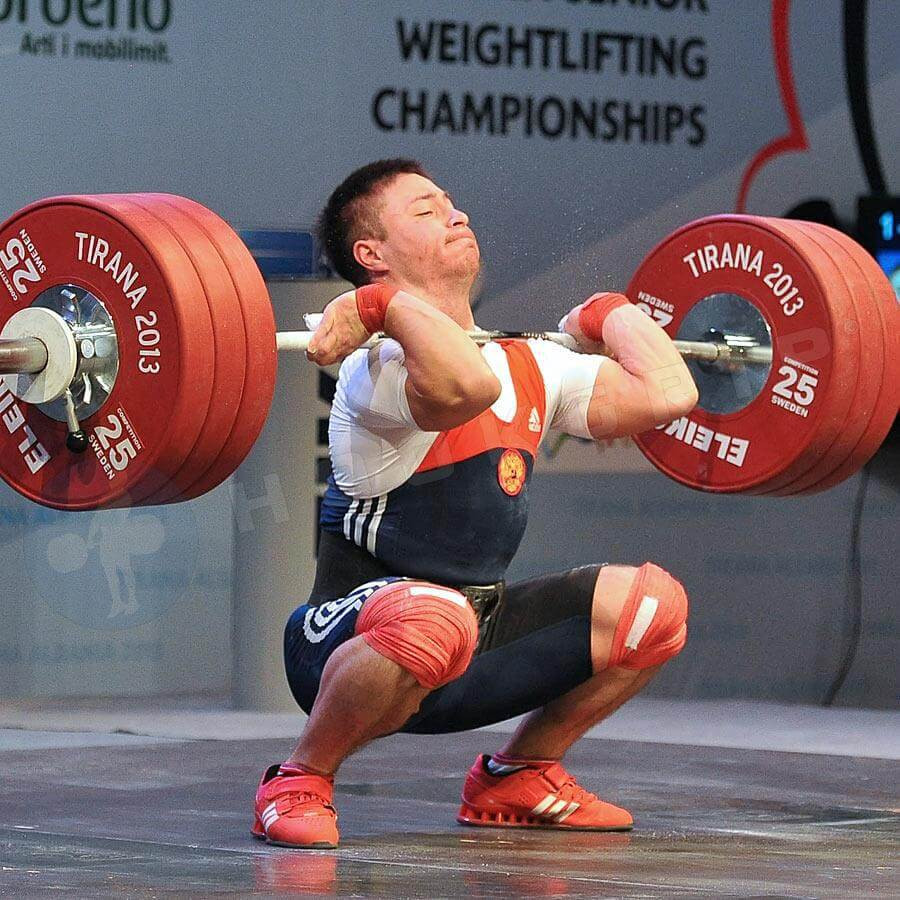
Shoes
Weightlifting footwear has gone through many changes over the years. Early on there were no lifting shoes commercially available. My first attempt was a simple pair of ankle-high work boots, dyed black, with white laces. Some split technique lifters wore bowling shoes. There were lifters that wore combat boots, laced up to the mid-shin. At one local meet where I served as the announcer, a young lifter struggled through each lift while wearing soccer cleats.
Young readers, please note: today’s “sneaker” generation of shoes had yet to appear. Sure, in a local sporting goods store you could buy a new pair of Converse “Chuck’s” for under $10, but this was not a running shoe, and it seems an unlikely choice for weightlifting. That said, in 1964 America’s Lou Riecke (82.5kg) split snatched a world record 147.5kg (325lbs) while wearing a pair of Chuck’s.
Today’s popular running shoe design was not readily available until the 1970s, a result of Frank Shorter kick-starting the American running craze by winning the ABC Sports-televised 1972 Olympic Games marathon. Around this time American lifters could choose from several foreign (Poland, Finland, etc.) manufactured weightlifting shoes, costing about $20 a pair. Noting the increased demand, even York Barbell Company had a shoe available.
Cognizant of trends, the German company Adidas (technically, Adidas), with the help of American lifting hero Tommy Kono, developed their first weightlifting shoe at about the same time. The retail price was an outrageous $59 per pair. Today’s best Adidas and Nike weightlifting shoes retail for $200 per pair.
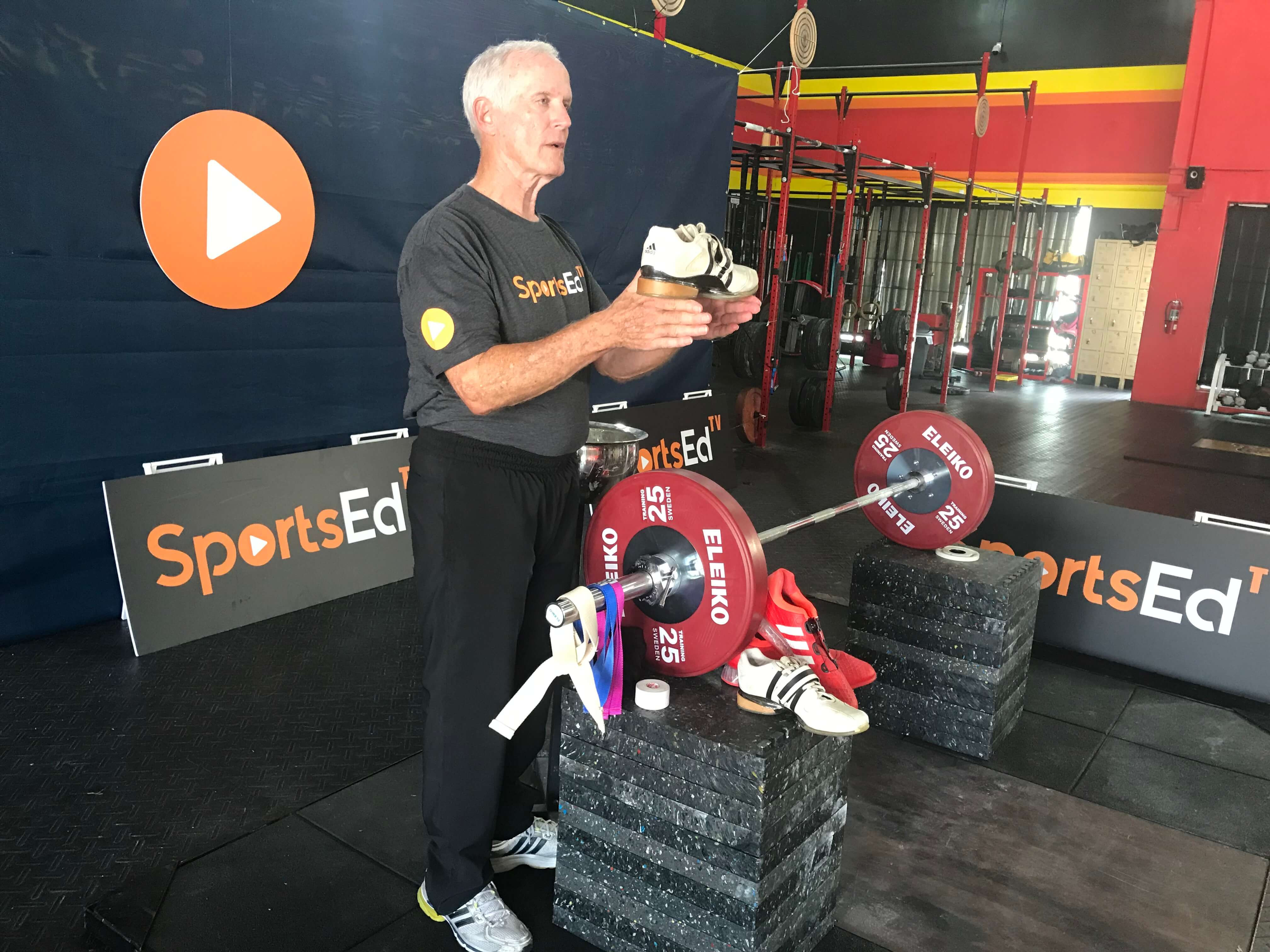
Always a treasured insider find were the weightlifting shoes produced in the Soviet Union. One drawback, however, was the leather sole found on all of these shoes. This could cause a foot to slip, especially when splitting in the jerk, and especially in the US where many platforms were made of smooth plywood.
This situation was remedied by the introduction of rosin-type substances, usually located near the chalk container on the competition stage. A lifter would kick his/her feet in the rosin while applying chalk to the hands. The presence of rosin continues today, long after the disappearance of leather soles.
Be sure to check out the great blog by Coach Bridget Raach on the subject of weightlifting shoes.
Grip
We’ve covered the use of chalk to aid the grip on the barbell. A solid grip is needed for success in the snatch or clean. Although the “hook” grip is not equipment, it is the standard method used by all serious weightlifters. This consists of placing the thumb against the bar, then wrapping the index and middle fingers around the thumb. The ring and little fingers hold the bar rather loosely, especially with the wider grip used to snatch. This hook grip adds at least 10% to the amount lifted in any pulling motion. There is no need to maintain the hook grip for a pushing exercise, i.e., lifters return to a normal grip after the clean, before the jerk.
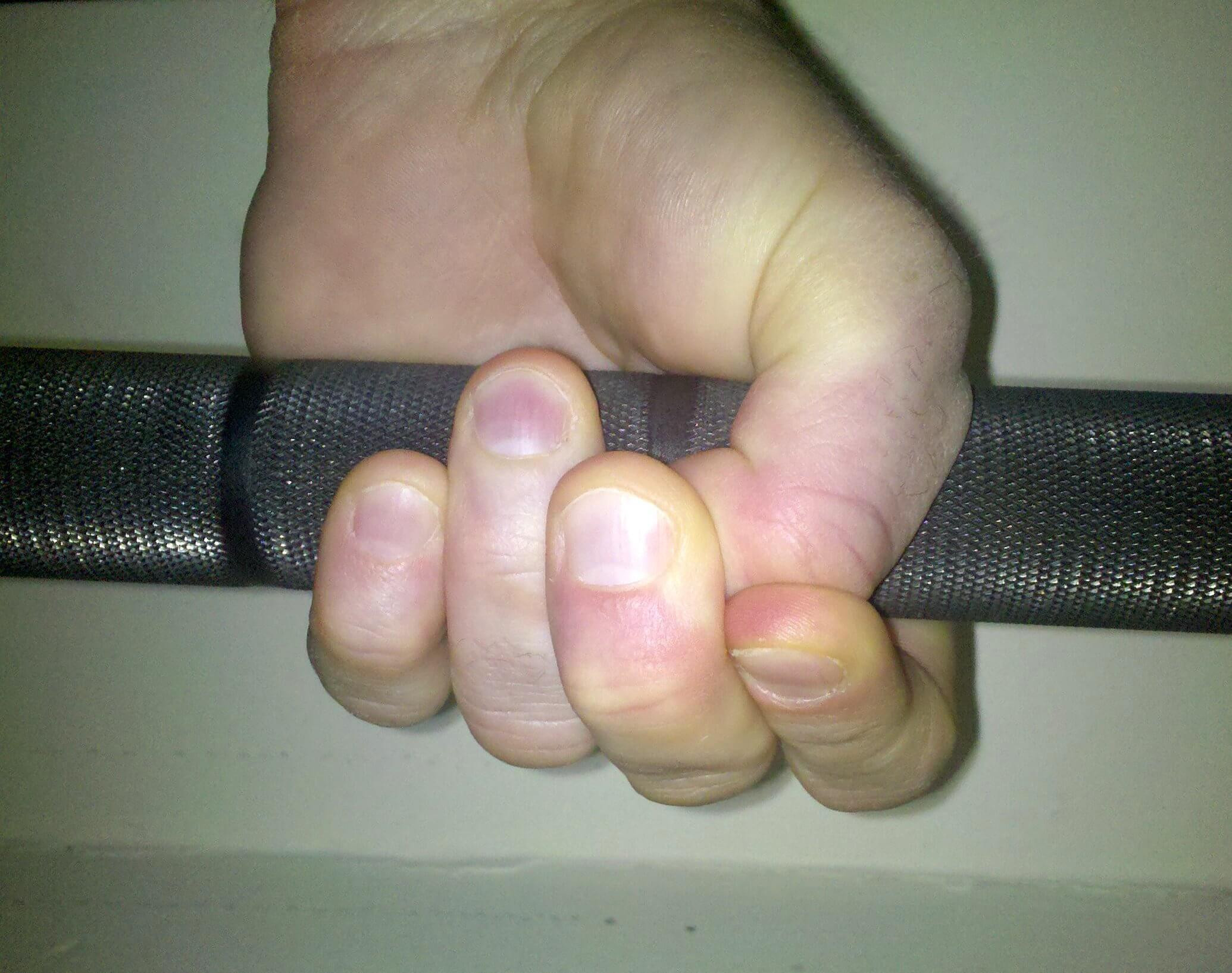
Beginners complain about mild pain associated with the hook grip. My advice: get used to it. After a few weeks, this will not be an issue. Lifters wrap their thumbs in the trainer’s tape so as to avoid tearing the callous that develops just below the thumb’s middle joint.
Pulling Straps
While on the topic of grip we should note that experienced lifters all have in their gym bag a pair or two of pulling straps. Straps allow for generally greater weights to be lifted. Their use is not permitted in competition, but they are a regular part of training, both for the full lifts and their derivatives. Using straps gives the hands a break from a large volume of pulling exercises.
Early attempts to secure the grip can be traced back quite a way. Initial straps were nothing more than strips of cloth strategically placed around the wrist and the bar, held in place by the hands.
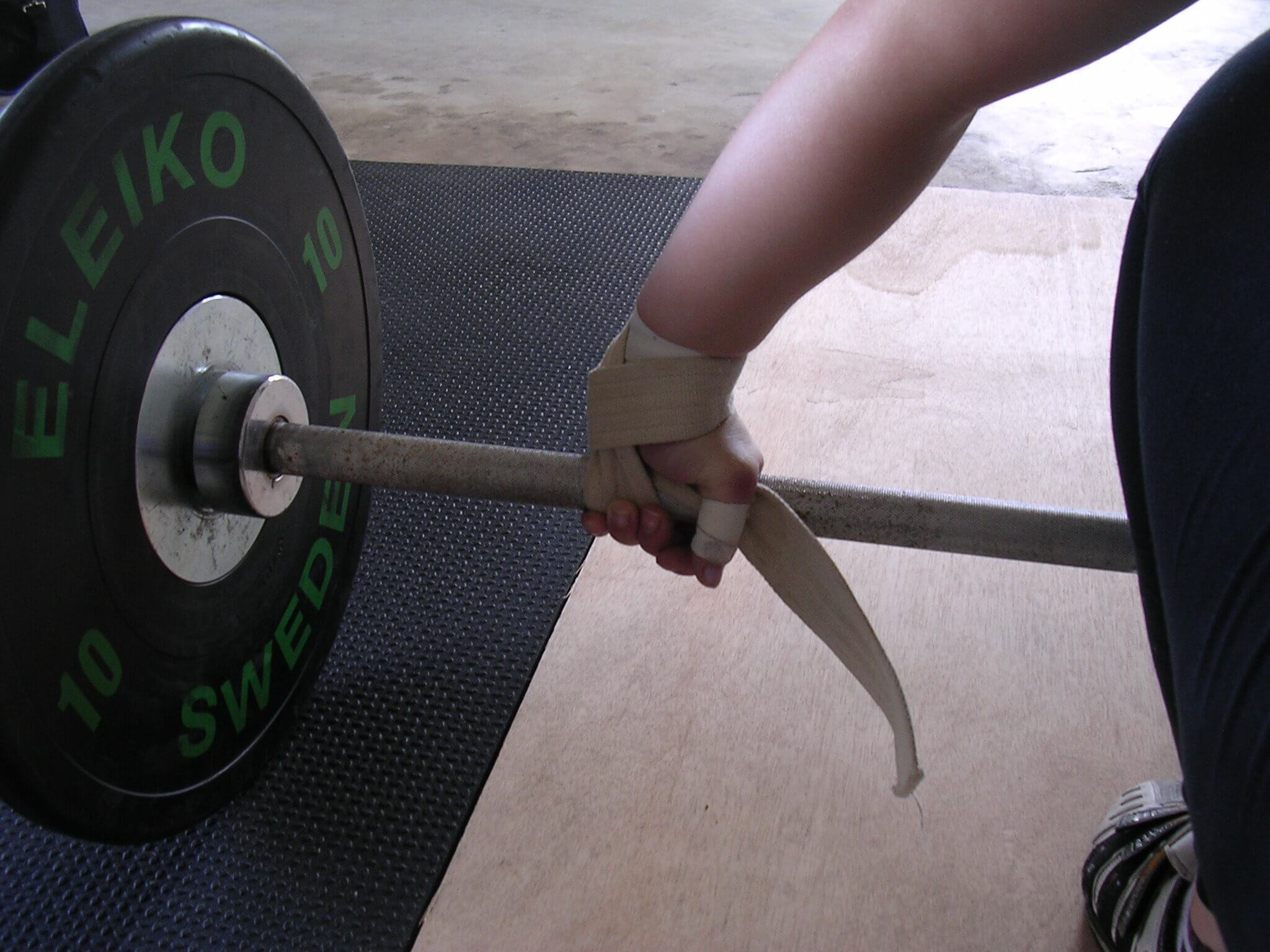
There are several pulling strap designs, and it’s not unusual to see beginners fail to properly engage the straps. One thing for sure, while straps are extremely valuable, they should never be applied in a such a manner that the lifter cannot safely distance him/herself from a falling barbell (missed lift) by simply opening the hand and disengaging the straps. Have a bailout plan!
Blocks
An early technical rule remains today that forbids a lifter from snatching or cleaning “from the hang.” A hang position is defined simply as any position in which the barbell is not on the platform. Why this strange rule? Well, before pulling technique evolved into what we teach today, some lifters could lift more “from the hang” than they could from the platform.
The rule was introduced to keep the snatch and the clean as one continuous pulling motion, not a lift in which a lifter could raise the bar, then stop in (or lower to) a more advantageous position from which the lift would be completed.
Lifting from blocks has been utilized for many years. This allows for snatches, cleans, and pulls to be performed from various levels, including working from the end of the first pull (just below the kneecaps) or focusing exclusively on the explosive second pull.
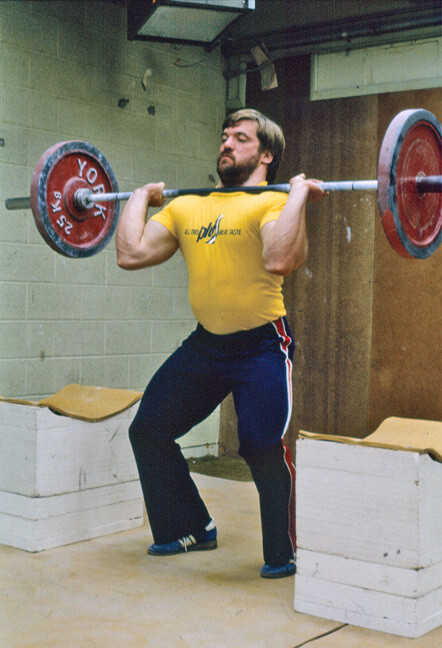
Blocks allow lifters to strengthen their weakest areas in a safe, secure, and fixed posture that prevents premature tiring of muscles can occur when holding a static hang position.
Blocks are invaluable for teaching proper weightlifting technique to beginners. SportsEdTV offers instruction on how to learn the lifts from blocks and from the hang. Just keep in mind; beginners may be challenged, especially in the lower back muscles, to hit consistent hang positions for each repetition. Using blocks solves this problem.
Many CrossFit facilities invest in jerk blocks (for lowering weights from overhead) and expect to use these for teaching snatch and clean technique. Jerk blocks are so large and unwieldy that they usually sit in a corner, taking up a platform, and never get used as adjustable pulling blocks. Jerk blocks make sense for heavy jerk efforts, but far too many lifters use them for every attempt. Safely lowering weights from overhead is a skill all lifters should develop.

Weightlifters at the US Olympic Training Center in Colorado Springs have used huge, hard to move wooden blocks that appear to be those I had made in the 1980s. In my opinion, what has been needed for many years is a block design that is portable, adjustable, and durable. This is now available from DC Blocks®, and the design is featured at SportsEdTV.
Squat Rack
Some sort of rack designed to hold a barbell high off the ground is necessary for heavy squatting and jerk from the rack movements. In today’s world, the squat is perhaps a key exercise related to weightlifting success. In earlier times, most lifters used a split style in the snatch and the clean, so lower body strength was not that crucial and squatting was not as necessary as it is today.
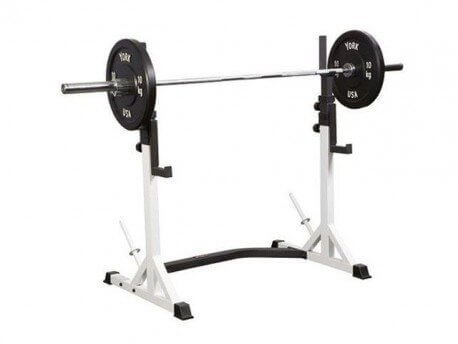
Racks come in many designs. Freestanding squat racks are great for use on the platform. A power rack (“cage”), a popular, but probably misnamed vertical rack designed in the 1960s for various isometric muscle action moves can work well equally well as long as the barbell can be placed outside the vertical posts and adjustable hooks are available.
We have had a look at key equipment needed to master successful weightlifting technique. Hopefully, this familiarizes newcomers with what to expect, both at a competition and in the training hall.



